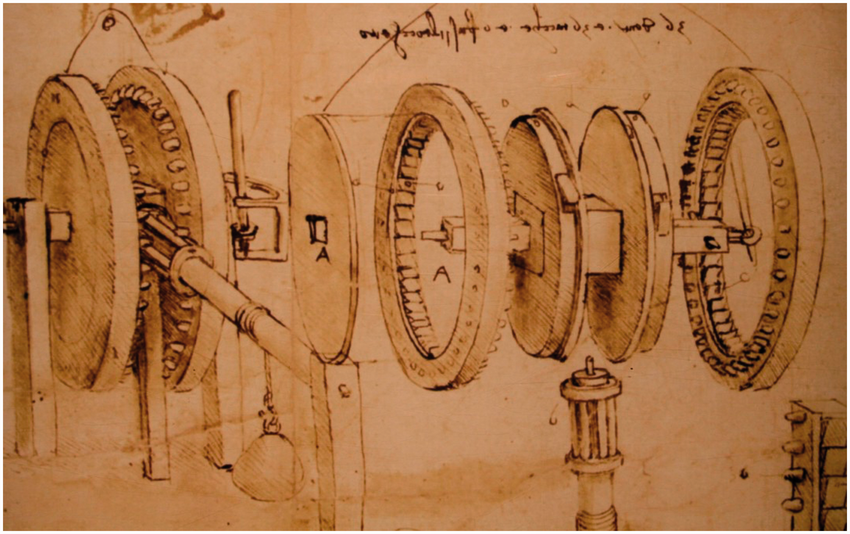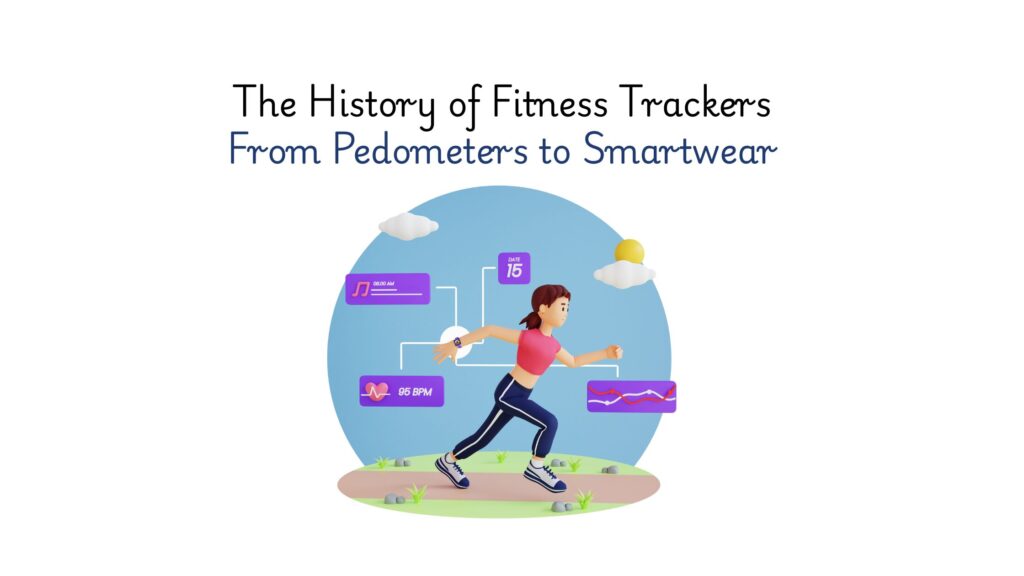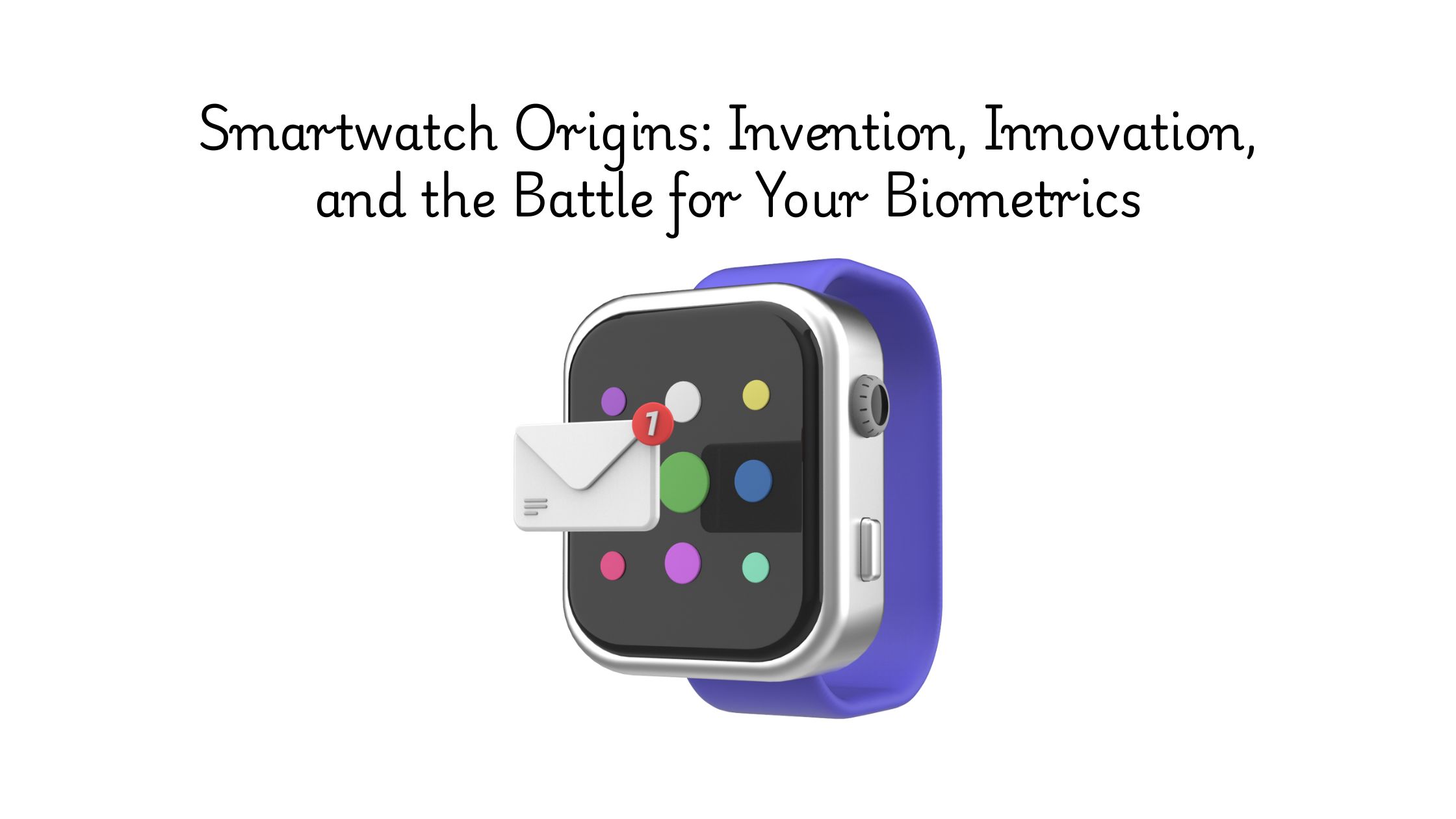Remember when counting steps meant doing the math in your head? Or maybe scribbling notes in a pocket notebook? Now, you just glance at your wrist and bam! steps, heart rate, sleep, stress – All tracked. All synced, automatically.
Fitness trackers have become part of our lives. They nudge us to move more. They measure our progress. They make health feel tangible. But here’s the thing: they didn’t appear overnight.
The history of fitness trackers is full of surprising twists. From hand-cranked pedometers in the 1700s to 21st-century wearables with medical-grade sensors.
This article takes you on that journey, through the inventions, the patents, and the people who turned a simple step counter into a billion-dollar industry.
Where It All Began: The Surprisingly Old Origins of Fitness Trackers
Long before wearable tech became a staple in our daily lives, the quest to quantify movement began with the pedometer, a device designed to count steps and measure distance. The origins of this simple yet transformative tool trace back several centuries, showcasing humanity’s enduring interest in tracking physical activity.
Leonardo da Vinci’s Vision
In the late 15th century, the polymath Leonardo da Vinci conceptualized a mechanical device aimed at measuring the distance traveled by soldiers. His design featured a series of cogwheels that would engage with each step, effectively counting paces and aiding in military logistics. While it’s unclear if da Vinci ever constructed this pedometer, his sketches(image below) laid the groundwork for future innovations in movement tracking.

Source: ResearchGate
The Evolution of Step Counting Devices
The 18th century saw further advancements with Swiss watchmaker Abraham-Louis Perrelet developing a self-winding mechanism for watches around 1777 that also tracked movement by harnessing the motion of the wearer (like a pedometer). This innovation not only improved timekeeping but also provided a practical method for individuals to monitor their physical activity.
In the 18th century, mechanical pedometers became more refined and accessible. Notably, Thomas Jefferson is credited with introducing a mechanical pedometer to the United States after obtaining one from France. Although Jefferson did not invent the device, his interest and utilization contributed to its awareness and adoption in America.
These early innovations reflect a growing recognition of the importance of monitoring physical activity, setting the stage for the sophisticated fitness tracking devices we rely on today.
From Mechanical Steps to Digital Signals: The Tech That Made Tracking Real
The evolution of fitness tracking took a significant leap forward in the mid-20th century, transitioning from mechanical pedometers to electronic devices capable of more precise measurements. This era marked the beginning of integrating technology into personal fitness monitoring, setting the stage for the sophisticated wearables we use today.
The Manpo-Kei: Pioneering Electronic Step Counting
In 1965, Dr. Yoshiro Hatano, a Japanese professor at Kyushu University of Health and Welfare, introduced the Manpo-kei, which translates to “10,000 steps meter.” Dr. Hatano’s research aimed to combat obesity by encouraging individuals to walk 10,000 steps daily, a regimen he found effective in maintaining a healthy balance between caloric intake and expenditure. The Manpo-kei became a cultural phenomenon in Japan and laid the foundation for the step-counting features prevalent in modern fitness trackers.
Advancements in Wearable Technology
The late 20th century witnessed further innovations in wearable fitness technology. Companies began developing devices that not only counted steps but also monitored other physical activities and vital signs. These advancements were propelled by the miniaturization of electronic components and the increasing interest in personal health monitoring. Patents during this period reflect a growing emphasis on integrating multiple sensors into compact, user-friendly devices.
One notable example is the development of wearable systems designed for monitoring strength training. These systems utilized sensors to analyze physiological data, providing users with feedback on their performance and technique. Such innovations marked a shift towards more comprehensive fitness tracking, encompassing various forms of exercise beyond walking.
These early electronic devices set the stage for the modern fitness trackers that have become integral to contemporary health and wellness routines.
Wrist Tech Before the Wearable Boom: Foundational Fitness Tracker Patents
A single breakthrough didn’t drive the evolution of fitness trackers. It was a steady accumulation of innovations in wearables, biosensors, and motion-tracking technology. Before Fitbits and Apple Watches, inventors were already exploring how to measure heart rate, steps, calories, and even VO₂ max using compact, wrist-worn or body-mounted devices.
To trace this innovation arc, we used the Global Patent Search tool, which semantically matches plain-English technology descriptions to historically relevant patents across global databases.
We entered the query: “Wearable devices monitoring physical activity, heart rate, sleep, and other health metrics” and analyzed filings between 1955 and 1985 to uncover early innovations behind today’s fitness wearables.

Source: GPS
This was a pivotal window when analog pedometers gave way to early biometric electronics. This date range captures the silent shift from mechanical step counters to sensor-driven fitness devices, years before the term “wearable tech” existed.
The search surfaced some interesting patents: From wrist-worn pulse sensors to devices calculating aerobic capacity, we found these were the patents that paved the way for modern health-tracking devices. Below is a chronological list of these 14 foundational patents and why each was pivotal to the development of fitness trackers.
| Priority Date | Patent Number | Title | Why It’s Foundational |
| 1978-10-23 | DE2846010A1 | Electronic Wrist Watch Incorporating Pulse Rate Monitor | Among the earliest integrations of a pulse monitor with a wristwatch; precursor to today’s smartwatches and fitness bands. |
| 1978-05-15 | US4202350A | Device for Measuring Pulse, Breathing and Running Rate for Joggers | Early multifunctional wearable for joggers measuring pulse, breath, and pace; helped define fitness-specific wearables. |
| 1978-04-07 | CA1108241A | Heart Beat Rate Monitor | Introduced customizable heart rate thresholds and memory; core features in modern trackers that warn users of anomalies. |
| 1979-08-19 | JPS6042688A | Measuring Device for Calorie Consumption | Combined pedometer and stopwatch to estimate calories burned; paved the way for integrated activity and metabolic tracking. |
| 1979-06-01 | DE2922542A1 | Personal Pulse Rate Monitor for Hazardous Occupation | Used pulse alerts with emergency triggers; earliest example of safety-oriented biometrics in wearables. |
| 1980-09-11 | EP0065519A1 | Pulse Detector | First wrist-worn elastic band to measure pulse via stretch sensors; early proof of concept for optical & pressure-based pulse detection. |
| 1980-03-03 | GB2070775A | Heartbeat Rate Measuring Instrument | Simple wearable pulse monitor with remote output capability; contributed to the miniaturization and telemetric design of fitness trackers. |
| 1983-02-15 | US4566461A | Health Fitness Monitor | Used heart rate to compute VO₂ max and fitness scores; an advanced precursor to today’s aerobic fitness and recovery tracking. |
| 1983-08-24 | EP0172747A2 | Pulse Rate Monitor | Used earlobe-based blood flow sensors and audio feedback; established multi-sensory user interfaces in early wearables. |
| 1983-12-20 | US4608994A | Physiological Monitoring System | Combined pulse, temperature, and blood pressure tracking with memory and comms; foreshadowed the smart health watch. |
| 1984-09-18 | FR2589712A2 | Heart Rate Monitoring with Plethysmographic Detection | Introduced comfortable cuff-based heart monitoring; paved the way for cuffless photoplethysmography in modern wearables. |
| 1985-01-31 | WO8604497A1 | Apparatus for Monitoring Physiological Parameters | Detected heart, breath, and movement to compute calories and fitness; closely mirrors today’s holistic trackers like Fitbit or Garmin. |
| 1985-08-31 | US4807639A | Pulse Detection Apparatus | Compared post-exercise pulse to resting to estimate recovery; modern analogs include heart rate recovery and fitness age. |
| 1985-01-08 | US4712562A | Outpatient Monitoring Systems | Enabled telemetric transmission of heart rate and blood pressure; groundwork for remote health monitoring and wearable APIs. |
Inside the Legal Fights Behind Your Wristband
The rapid ascent of fitness trackers has not only transformed personal health monitoring but also ignited a series of intense legal battles over intellectual property. Companies have fiercely protected their innovations, leading to notable disputes shaping the industry.
Fitbit vs. Jawbone: A Rivalry Turned Legal
One of the most prominent IP conflicts unfolded between Fitbit and Jawbone, two pioneers in the wearable fitness market. In 2015, Jawbone accused Fitbit of poaching employees and misappropriating trade secrets, alleging that Fitbit hired former Jawbone staff who brought confidential information with them. This led to a series of lawsuits, with Jawbone seeking to halt Fitbit’s product sales. However, the International Trade Commission ruled in Fitbit’s favor, stating that no misappropriation had occurred.
The legal tussle took a criminal turn in 2018 when six former and current Fitbit employees were indicted for possessing stolen trade secrets from Jawbone. This case underscored the high stakes and fierce competition in the wearable tech industry.
Philips vs. Fitbit: Patent Infringement Claims
In another significant case, Philips North America LLC filed a lawsuit against Fitbit in 2019, claiming that Fitbit’s wearable products infringed on several of Philips’ patents related to health monitoring technologies. The dispute centered around functionalities integral to fitness trackers, such as activity tracking and alarm reporting. However, in 2022, a federal judge ruled in the favor of Fitbit, invalidating Philips’ patents and concluding that they did not cover Fitbit’s wearable devices.
Apple vs. Masimo: The Battle Over Health Monitoring Features
Apple, a dominant player in the smartwatch market, faced legal challenges from Masimo, a health technology company specializing in non-invasive monitoring. Masimo alleged that Apple’s Watch Series 6 infringed on its patents related to blood oxygen measurement. In December 2023, the International Trade Commission imposed an import ban on certain Apple Watch models, prompting Apple to modify the devices to comply with the ruling.
These legal battles highlight the complex and competitive nature of the fitness tracker industry, where companies vigorously defend their innovations and market positions.
Standards, Licensing, and IP Complexity
The fitness tracker industry operates at the intersection of health, technology, and data, leading to a complex landscape of standards, licensing, and intellectual property considerations. Unlike industries with well-established technical standards, the wearable technology sector, particularly fitness trackers, faces unique challenges in standardization and IP management.
The Absence of Unified Technical Standards
Unlike sectors such as telecommunications, where standardized protocols ensure interoperability, the wearable fitness technology industry lacks universally accepted technical standards. This absence means that manufacturers often develop proprietary systems, leading to potential compatibility issues between devices and platforms. Integrating advanced technologies like 5G into wearables further complicates this landscape, as it introduces the need to navigate existing standard essential patents (SEPs) from the telecom sector.
Navigating Standard Essential Patents (SEPs)
As wearables incorporate more sophisticated technologies, they may inadvertently utilize innovations covered by SEPs, particularly those related to wireless communication standards. Engaging with SEP holders requires adherence to Fair, Reasonable, and Non-Discriminatory (FRAND) licensing terms. However, determining what constitutes FRAND terms can be contentious, leading to legal disputes and negotiations that can hinder product development and market entry.
Intellectual Property Rights and Licensing Strategies
The rapid innovation in fitness trackers has led to a surge in patent filings, with companies striving to protect their technological advancements. This proliferation of patents necessitates careful navigation to avoid infringement and to secure necessary licenses. For startups and smaller enterprises, understanding the IP landscape is crucial to mitigate risks and to identify opportunities for innovation without encroaching on existing patents.
In this intricate environment, companies must balance the drive for innovation with the complexities of IP rights and the lack of standardized protocols, all while ensuring compliance with evolving regulations and maintaining a competitive edge in the market.
How Global Patent Search Helps You Navigate Fitness Tracker Innovation?

Working on a new wearable? Updating a fitness app? Exploring sensor tech? You need to know what’s already been patented and by whom.
Global Patent Search (GPS) makes it simple to:
- Search existing fitness tracking patents using plain English like “wristband that measures heart rate and syncs to phone”.
- Match product features, step tracking, heart monitoring, and Bluetooth syncing to existing patents.
- Find prior art for fitness sensors, data algorithms, or wearable designs.
- Explore global patent coverage, from Fitbit to Apple to niche sensor startups.
Whether you’re building, investing, or validating an idea related to Fitness Trackers or any other tech, GPS helps you see the IP landscape quickly. Explore the tool now.




